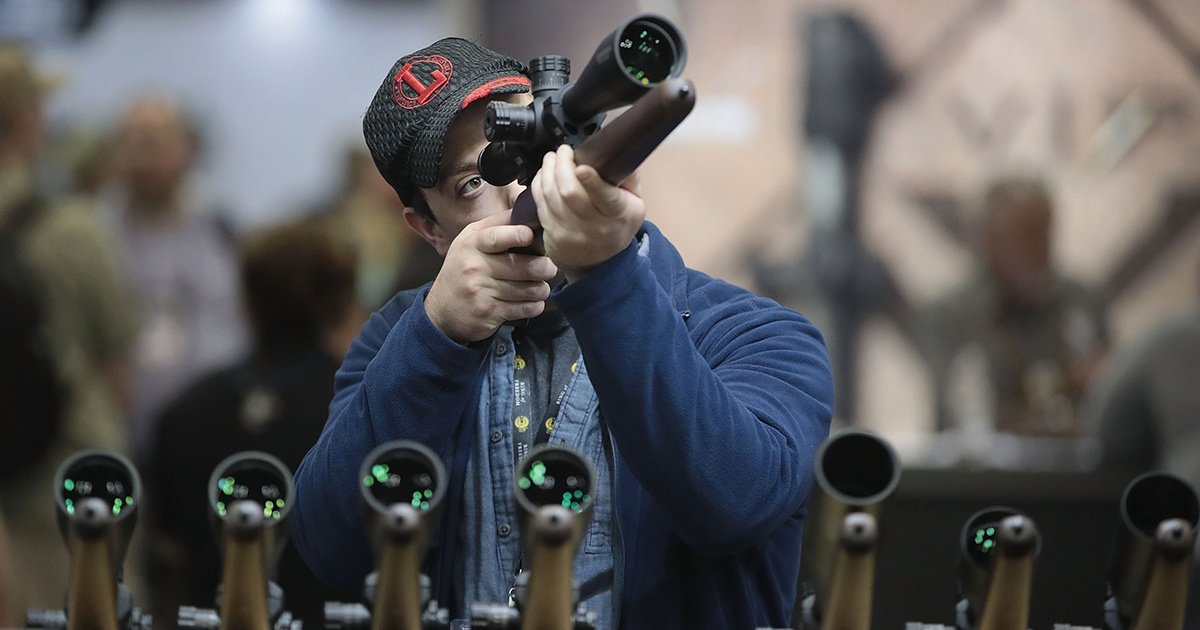Report on the Impact of ‘Stand Your Ground’ Laws on Sustainable Development Goals
This report analyzes the effects of “Shoot First,” or “Stand Your Ground,” legislation on key United Nations Sustainable Development Goals (SDGs). Based on data from Everytown for Gun Safety, the RAND Corporation, and the JAMA Network, the findings indicate these laws significantly undermine progress toward global development targets by increasing violence, exacerbating inequality, and imposing substantial public health and economic costs.
SDG 16: Peace, Justice and Strong Institutions
Undermining Public Safety and Reducing Peace (Target 16.1)
Contrary to their stated intent, “Stand Your Ground” laws have failed to make communities safer and are directly linked to an increase in violence and death rates, undermining SDG Target 16.1, which aims to significantly reduce all forms of violence and related death rates.
- Research published in the JAMA Network found these laws were associated with a national mean increase of 7.8% in monthly homicide rates.
- In states that adopted the laws, gun homicide rates rose by an average of 10.8%, resulting in over 700 additional gun deaths annually.
- Certain states, including Alabama, Florida, Georgia, Louisiana, and Missouri, experienced even more severe increases in gun homicides, ranging from 16.2% to 33.5%.
- No state that has enacted a “Stand Your Ground” law has seen a significant reduction in violent deaths.
Compromising Justice and the Rule of Law (Target 16.3 & 16.b)
The laws create systemic failures in the justice system, providing protection for violent individuals and preventing equal access to justice, in direct opposition to SDG Target 16.3 (promote the rule of law and ensure equal access to justice) and Target 16.b (promote and enforce non-discriminatory laws).
- A review of Florida cases revealed that approximately 60% of individuals claiming a “Stand Your Ground” defense had prior arrest records, with one-third of those for violent crimes.
- The Association of Prosecuting Attorneys has testified that these laws “provide safe harbors for criminals” and hinder the prosecution of those who unnecessarily kill or injure others under a claim of self-defense.
SDG 10 & SDG 5: Reduced Inequalities and Gender Equality
Exacerbating Racial Disparities (Target 10.2 & 10.3)
The application of “Stand Your Ground” laws demonstrates significant racial bias, deepening societal divisions and undermining SDG Target 10.3, which seeks to ensure equal opportunity and eliminate discriminatory laws and policies.
- In states with these laws, homicides are deemed justifiable four times more often when a white shooter kills a Black victim compared to the reverse scenario.
- This disparity is significantly greater in specific states:
- Louisiana: 8.5 times more likely
- Indiana: 10.3 times more likely
- Michigan: 12.4 times more likely
- The laws embolden actions based on racial bias, as justifiable homicide rates have increased by 55% in “Stand Your Ground” states.
Failing to Protect Women (Target 5.1 & 5.2)
The legislation is often skewed against women and has failed to protect victims of domestic violence, hindering progress on SDG Target 5.2, which calls for the elimination of all forms of violence against women and girls.
- Research indicates that women who kill an abusive partner and claim self-defense are more likely to be convicted and receive longer sentences than men who do the same.
SDG 3 & SDG 11: Public Health and Community Safety
Negative Impacts on Public Health and Well-being (Target 3.4)
The rise in homicides and injuries constitutes a significant public health crisis, directly impacting SDG 3, which aims to ensure healthy lives and promote well-being for all.
- Adolescents experience higher rates of gun homicide in “Stand Your Ground” states.
- The laws are also linked to an increase in unintentional shootings among youth.
- Increases in nonfatal injuries lead to a greater burden on emergency rooms and hospital systems.
Jeopardizing Sustainable and Safe Communities (Target 11.1)
By increasing violence and fostering a climate of fear, these laws make communities less safe and inclusive, working against the goal of SDG 11 to create safe and sustainable human settlements.
SDG 8: Economic Implications
The Economic Burden of Increased Violence (Target 8.1)
The consequences of “Stand Your Ground” laws carry a substantial economic cost, diverting critical resources from productive investments and hindering sustainable economic growth as envisioned in SDG 8.
- A single gun homicide is estimated to cost approximately $15 million in associated expenses, including healthcare, criminal justice response, and lost income.
- The 700 additional gun homicides attributed to these laws each year result in a total economic cost of nearly $11 billion.
- Of this total, an estimated $500 million represents direct taxpayer expenses for law enforcement, courts, and medical care.
Conclusion and Policy Recommendations
The evidence overwhelmingly indicates that “Stand Your Ground” laws are a costly failure that actively undermines multiple Sustainable Development Goals. They have increased violence, deepened racial and gender inequalities, created a public health burden, and imposed significant economic costs. In light of these findings, policymakers are urged to reject these failed policies to advance the global goals of achieving peace, justice, equality, and well-being for all.
Which SDGs are addressed or connected to the issues highlighted in the article?
-
SDG 16: Peace, Justice and Strong Institutions
The article directly addresses this goal by focusing on the increase in violence, homicides, and firearm-related deaths resulting from “Shoot First” laws. It discusses failures in the justice system, such as preventing prosecutors from bringing cases and the discriminatory application of the law, which undermines the rule of law and public safety.
-
SDG 10: Reduced Inequalities
This goal is relevant due to the article’s section on “Deadly Discrimination.” It highlights how these laws disproportionately and negatively affect people of color, particularly Black men. The data showing that homicides are deemed justifiable at vastly different rates based on the race of the shooter and victim points to a severe inequality of outcome within the justice system.
-
SDG 5: Gender Equality
The article connects to this goal by explaining that “Shoot First” laws are “skewed against women” and have failed to protect victims of domestic violence. It also notes that women who claim self-defense in such cases are more likely to be convicted, indicating a gender bias in the legal system that undermines equality and protection for women.
-
SDG 3: Good Health and Well-being
This goal is addressed through the article’s discussion of increased death and injury rates. The rise in homicides, firearm deaths, and nonfatal injuries represents a significant public health crisis. The article also mentions the strain on healthcare systems, citing increased emergency room and hospital visits as a consequence of the violence linked to these laws.
What specific targets under those SDGs can be identified based on the article’s content?
-
Target 16.1: Significantly reduce all forms of violence and related death rates everywhere.
The article’s central theme is that “Shoot First” laws lead to an “increase in homicides and other violent crimes.” It provides specific data, such as a “mean national increase of 7.8% in monthly homicide rates” and “more than 700 additional gun deaths every year,” directly contradicting the aim of this target.
-
Target 16.3: Promote the rule of law at the national and international levels and ensure equal access to justice for all.
This target is identified when the article quotes the president of the Association of Prosecuting Attorneys, who states these laws “prevent prosecutors from bringing cases against those who claim self-defense after unnecessarily killing or injuring others.” This demonstrates a breakdown in the rule of law and unequal access to justice.
-
Target 16.b: Promote and enforce non-discriminatory laws and policies for sustainable development.
The article highlights that “Shoot First” laws are discriminatory policies. The evidence that “homicides in which white shooters kill Black victims are deemed justifiable four times as often as when the situation is reversed” shows the enforcement and outcome of these laws are discriminatory, which this target aims to eliminate.
-
Target 10.3: Ensure equal opportunity and reduce inequalities of outcome, including by eliminating discriminatory laws, policies and practices.
This target is relevant because the article presents “Shoot First” laws as a discriminatory policy that produces unequal outcomes. The stark racial disparities in how “justifiable homicide” is determined serve as a clear example of an inequality of outcome that this target seeks to address.
-
Target 5.2: Eliminate all forms of violence against all women and girls in the public and private spheres.
The article points to this target by stating the laws “have failed to protect victims of domestic violence.” This failure to shield women from intimate partner violence is a direct challenge to the goal of eliminating violence against women.
Are there any indicators mentioned or implied in the article that can be used to measure progress towards the identified targets?
-
Homicide and Violent Crime Rates (Indicator for Target 16.1)
The article provides explicit quantitative data that can be used as indicators. These include: “a mean national increase of 7.8% in monthly homicide rates,” an “8.0% in monthly firearm homicide rates,” “more than 700 additional gun deaths every year,” and an increase in “robbery, rape, and aggravated assault.”
-
Disaggregated Data on Justifiable Homicides (Indicator for Targets 10.3 and 16.b)
The article provides a powerful indicator of discrimination by citing data on justifiable homicides disaggregated by race. The finding that “homicides in which white shooters kill Black victims are deemed justifiable four times as often as when the situation is reversed” is a direct measure of unequal and discriminatory outcomes in the justice system.
-
Data on Conviction Rates by Gender in Self-Defense Cases (Indicator for SDG 5)
An implied indicator is mentioned when the article cites research showing that “women who claimed self-defense in domestic violence cases were more likely to be convicted.” Tracking conviction rates for men and women in comparable self-defense cases would serve as an indicator of gender bias in the justice system.
-
Economic Cost of Violence (Indicator for multiple SDGs)
The article mentions the financial cost of violence as an indicator of the broader societal impact. It states that “a single gun homicide costs about $15 million” and the “700 gun homicides every year attributable to Shoot First laws cost nearly $11 billion.” This economic burden, including healthcare and law enforcement expenses, is a measurable indicator of the negative effects of violence.
SDGs, Targets and Indicators Analysis
| SDGs | Targets | Indicators Identified in the Article |
|---|---|---|
| SDG 16: Peace, Justice and Strong Institutions |
16.1: Significantly reduce all forms of violence and related death rates.
16.3: Promote the rule of law and ensure equal access to justice. 16.b: Promote and enforce non-discriminatory laws and policies. |
– Mean national increase of 7.8% in monthly homicide rates. – 8.0% increase in monthly firearm homicide rates. – Over 700 additional gun deaths annually. – Increase in other violent crimes (robbery, rape, aggravated assault). – Testimony that laws “prevent prosecutors from bringing cases.” – Disproportionate application of “justifiable homicide” based on race. |
| SDG 10: Reduced Inequalities | 10.3: Ensure equal opportunity and reduce inequalities of outcome. |
– Data showing homicides with white shooters and Black victims are deemed justifiable 4 times more often than the reverse. – Specific state disparities mentioned (e.g., 12.4 times in Michigan). |
| SDG 5: Gender Equality | 5.2: Eliminate all forms of violence against all women and girls. |
– Mention that laws have “failed to protect victims of domestic violence.” – Implied indicator: Higher conviction rates for women claiming self-defense in domestic violence cases compared to men. |
| SDG 3: Good Health and Well-being | 3.4: Reduce premature mortality. |
– Increase in violent deaths and homicides. – Increase in nonfatal injuries leading to more emergency room and hospital visits. – Economic cost of gun violence, including direct healthcare expenses ($500 million in taxpayer costs for law enforcement, courts, and medical care). |
Source: eji.org







